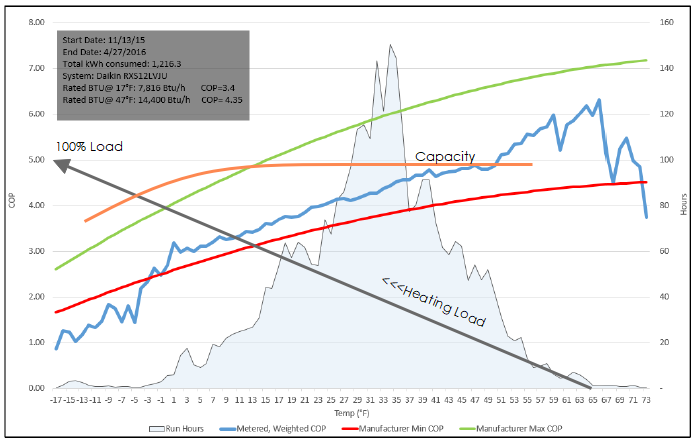
Hi folks! We’re picking up from last week’s post in which we examined three vital elements for advancing technologies from successful pilots to mainstream acceptance and market penetration. They are:
- Makin’ money – it must be profitable from the manufacturer through the point of sale to the end-user.
- Cool – getting market penetration is much easier when customers show off their new thing to their sphere of colleagues, friends, and neighbors.
- Simple – end-users of the product should understand the product and have no surprises like, why is my water heater blowing cold air?
Pilot Results
I estimate the vast majority of pilot and demonstration project work, findings, lessons learned, and so on, is wasted. For instance, some states and utilities have transferrable rich troves of R&D work, pilot projects, and demonstrations. Referring to the “makin’ money” element, they have no incentive to share with other jurisdictions other than bravado.
Have you ever browsed for things on a DOE, EERE, NREL, etc. site? It’s where people go to get lost in a rabbit hole, only to return to where they started. I need a link or the exact title to use a search engine to find it. This, too, is a problem.
We need a way to shake this stuff down to utility folks, their emerging technology, evaluation, and engineering teams or consultants.
Focus on the Right Technologies
Focusing on the right technologies is easier said than done, but what is likely to have the biggest impact, solve a problem, provide tremendous non-energy benefits, or egad, be fun to use?
Consider electrification technologies. We have stovetop cooking with electric induction, electric vehicles, and heat pump technologies. There are two monumental barriers to induction cooking. The first is many people will have to throw out their beloved pots and pans. I’ve used anodized aluminum pots and pans since I started earning a professional salary, and I will not surrender them. Aluminum, copper, and glass are not magnetic and do not work with induction stoves.
The second and perhaps greater barrier is cooking with natural gas. People clutch to their natural gas stoves as kids do with stuffed toys or blankets. The other thing is, stoves use practically no energy compared to other home loads like heating, cooling, water heating, laundry, and maybe even electronics. It’s a losing battle. I’d skip that one in these early stages of electrification.
Vehicles are comparatively huge energy users, and EVs provide substantially cheaper fuel costs, and they can burn the radials on the streets, as I explained last week. Per owners, they are fast and fun to drive.
It Has to Work
In a February post, Years of Dominoes Fall in Texas, and the following week in a vlog, I explained that cold weather is the great barrier to electrification in much of the country. In brutal cold, wind turbines shut down at minus 20°F to prevent their damage. This is but one example. The issue is these problems occur when we are in most desperate need of the resource.
Last week, I explained some virtues of cold climate heat pumps, but I do not and would not rely on that as my sole source of heat here in Western Wisconsin. The reason is shown in the chart below from a 2016 ACEEE Summer Study paper. I added some curves (capacity and heating load) to make it even more exciting or confusing. The efficiency curve (blue line) shows that efficiency hangs in there down to, hmmm…, a little colder than 0°F, and then it plummets to worse than electric resistance heating when the wind turbines shut down. Psychologically, that drives me crazy. That is why I’m in this business. The answer is simple to me – have some type of backup natural gas heat for extreme conditions. For similar reasons with automobiles, I recommend plug-in hybrids.

Purity will stunt electrification. Bad experiences and bad news travel far and fast and last a long time. Hybrid cars, fleet vehicles, and hybrid heat pumps will be essential in regions that can experience extended periods of below 0°F weather.
Promote the Hell Out of It
The gold standard for emerging technology success during my career has been ground source heat pumps (electrification) in Iowa. This, like other cases I’ve used in this blog, is old, going back decades. Utilities promoted the heck out of this technology and whaddya know? They became the must-have – almost as popular as solar panels. It was cult-like. We even got requests to use “geothermal” (ground source) systems for industrial cooling, which is not a good idea because of one-sided loading. It was always in cooling, which would overheat the ground, and therefore, not a good application of the technology.
An issue with ground-source heat-pump systems is they are very complex systems to design for a cost-effective solution. Many first-timers use a belt, suspenders, and another belt design that costs a fortune and uses too much energy. We have also seen expensive well fields abandoned because the water treatment was poor. That caused heat transfer surfaces to foul, resulting in excessive compressor pressures and ultimate failure. What a waste!
Wrap
Classical disruptive technologies don’t need boosts from emerging technology programs—examples: the iPhone, Airbnb, Uber. Efficient products and systems are far different. There’s a reason for natural gas heating, petroleum-powered cars, natural-gas-fired cooking, water heating, and dryers. They work great. They are inexpensive to buy and operate, and they are simple, even though there are hundreds of parts in internal combustion engines.
We are at the point where program dollars need to be directed at education, training, and design assistance and directed away from cash incentives to customers. I’ll make it as clear as possible: If you want emerging technologies to emerge, program money needs to be spent on training, educating, and information dissemination and NOT on cash rebates.


